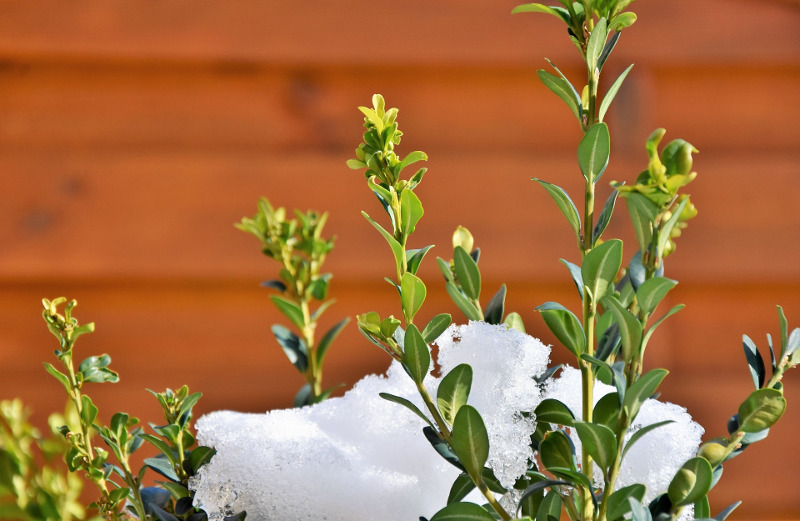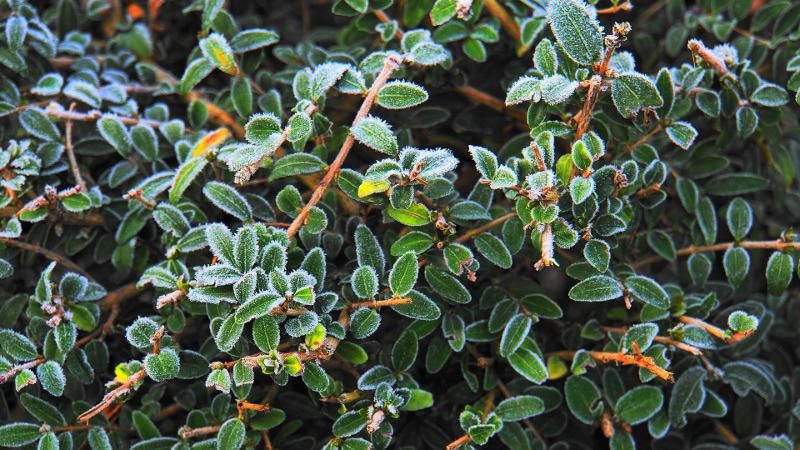Boxwood is a very popular shrub that can be found suitable for many climates. It is important to know what variety you are growing, or purchasing, since different boxwood varieties can have a range of hardiness zones. Boxwoods are rated hardy from zone 5 – 9 across various varieties. Common boxwood or buxus sempervirens is listed as hardy from zone 6 – 8 and is native to regions with more mild winters in Southern Europe.

Boxwoods have been known to suffer in the wintertime therefore proper winter care is important. Most damage can be attributed to periods of temperature fluctuations. Winter burn occurs when the foliage loses water from strong winds, harsh winter sun, and cold temperatures where the roots underground are unable to take up water to replenish the foliar loss. Foliage becomes discolored and will lighten or look bleached. Foliage can also turn brown or blackish from cold damage.
Some gardeners will protect boxwoods in particularly windy or vulnerable locations with burlap walls or coverings. For the most case, supplemental covers are unnecessary and can cause more harm than good. It is best to prepare boxwood for winter with a nice layer of mulch, making sure the crown of the plant is not planted or covered too deeply. Moderate winter snowfall can also insulate the plant through the winter. Very large or heavy snowfall should be removed from the plant to not cause breakage or other damage.
Cutting Back Boxwood For Winter
Any winter damage to the boxwood plant should be pruned off in early spring while the plant is still dormant. Boxwoods become dormant when the days become shorter and nights longer with cooler temperatures. Excluding any winter damage, healthy plants in well-suited environments remain evergreen through the winter. Prepare your boxwood for winter by keeping it happy and healthy throughout the growing season.
Boxwood Winter Care in Pots
Boxwoods make great container plants as well. You may consider digging and potting up any young or very small plants in your garden so that you can offer them more shelter through the winter. Potted boxwood plants can be modestly trimmed in the fall. Once gently pruned, place pots in a more sheltered location for the winter: along the side of a house, in a garage, or an unheated greenhouse. Be sure to protect them from high winds, very low temperatures, and overly harsh sun over the winter.
Watering Boxwood in Winter
It is important to continue watering your boxwood through the fall until a hard freeze or until the plant is fully dormant. Special attention should be given to your potted boxwoods that you have given a more sheltered location to ride out the winter. The more sheltered the location, the higher the need for water. If you’ve moved your plants into a covered unheated greenhouse or shed, water the plants once a month or so while dormant to mimic ideal outdoor conditions.
Growing Boxwood Indoors
It is not recommended to bring boxwood indoors as a houseplant. Boxwoods need a dormant or rest period to recharge during the winter, which they will not be able to get inside your home throughout the winter.

Steps to Care for Boxwood In Winter
Step 1 - Prepare your boxwood for winter by keeping it healthy throughout the growing season, fertilize in late fall.
Step 2 - Gently cut back and shape potted plants or garden boxwood to prepare for winter.
Step 3 - Insulate garden plants with a nice layer of mulch or in the case of garden plants in locations prone to extreme weather, burlap screens or blankets can be used as protection. Move potted plants to more sheltered locations.
Step 4 - Water plants through late fall and no more than once a month through the winter for potted plants. Only remove large or heavy snow accumulation.
Step 5 - Prune off any winter damage in early spring.
 |
Author Katie Endicott - Published 9-28-2021 |
